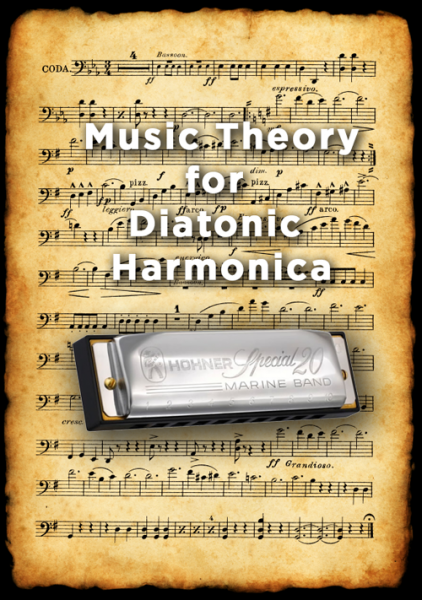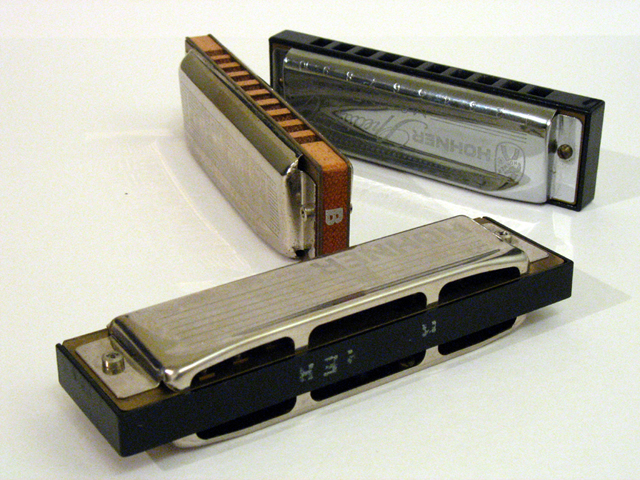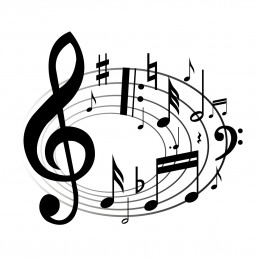Music Theory for Diatonic Harmonica: Part 3

The majority of Americans who play diatonic harmonica are primarily Blues players. This is because the instrument naturally plays Blues chords and licks if you play in the Mixolydian Mode, G on a C harp, also called Cross Harp and Second Position. (Ah, terminology.) This approach was discovered by American Blues musicians sometime in the 1920s or 30s - nobody really knows when. It is an incredible coincidence that the Germans would unknowingly design the world’s greatest Blues instrument, but it’s the truth. It’s just as natural to play a simple Blues chordal vamp on the diatonic harmonica as it is to play a German Folk tune.
Diatonic Harmonica and Music Theory
 The diatonic harmonica poses some unique challenges to someone starting to play it. Unlike most other Western instruments, it is not designed to play all the notes. Most diatonic harmonicas are set up using what is called the Richter tuning system. Named for a 19th century German harmonica maker, this system was designed to make the instrument serve several functions.
The diatonic harmonica poses some unique challenges to someone starting to play it. Unlike most other Western instruments, it is not designed to play all the notes. Most diatonic harmonicas are set up using what is called the Richter tuning system. Named for a 19th century German harmonica maker, this system was designed to make the instrument serve several functions.
If you sweep over the holes blowing each one from 1 to 10 (you can get single notes by using a pucker embouchure or tongue blocking, a more complicated technique), you will get a 3 octave major arpeggio. On a harmonica in the key of C, this starts at middle C, has the notes C, E, and G, and actually has the same range as a flute.
 The diatonic harmonica poses some unique challenges to someone starting to play it. Unlike most other Western instruments, it is not designed to play all the notes. Most diatonic harmonicas are set up using what is called the Richter tuning system. Named for a 19th century German harmonica maker, this system was designed to make the instrument serve several functions.
The diatonic harmonica poses some unique challenges to someone starting to play it. Unlike most other Western instruments, it is not designed to play all the notes. Most diatonic harmonicas are set up using what is called the Richter tuning system. Named for a 19th century German harmonica maker, this system was designed to make the instrument serve several functions.
If you sweep over the holes blowing each one from 1 to 10 (you can get single notes by using a pucker embouchure or tongue blocking, a more complicated technique), you will get a 3 octave major arpeggio. On a harmonica in the key of C, this starts at middle C, has the notes C, E, and G, and actually has the same range as a flute.
Music Theory with Howard Levy: Part 1

Learning music theory will actually help you pick out tunes by ear. I think the most important thing about music theory is teaching someone how to HEAR more accurately. I like to keep the terminology to a minimum and only teach things that are the most useful to what a musician needs to make progress at each step along the way.
The skill of being able to hear what you are listening to accurately is one that few people possess naturally, so it usually needs to be explained and taught. I like to draw a parallel between sight and sound.
The History of Harmonica: Part 2

As we saw in our previous installment, up until the 1900s the harmonica was still developing as the instrument we know it as today. It wasn’t long after the Hohner company successfully established itself however that the harmonica became more widely used, particularly in blues and country music. For the first time in history, musicians were became famous for playing harmonica. One of the most influential early blues harmonica players was Deford Baily, who in 1927 started to perform regularly on the popular “Grand Ole Opry” show.






